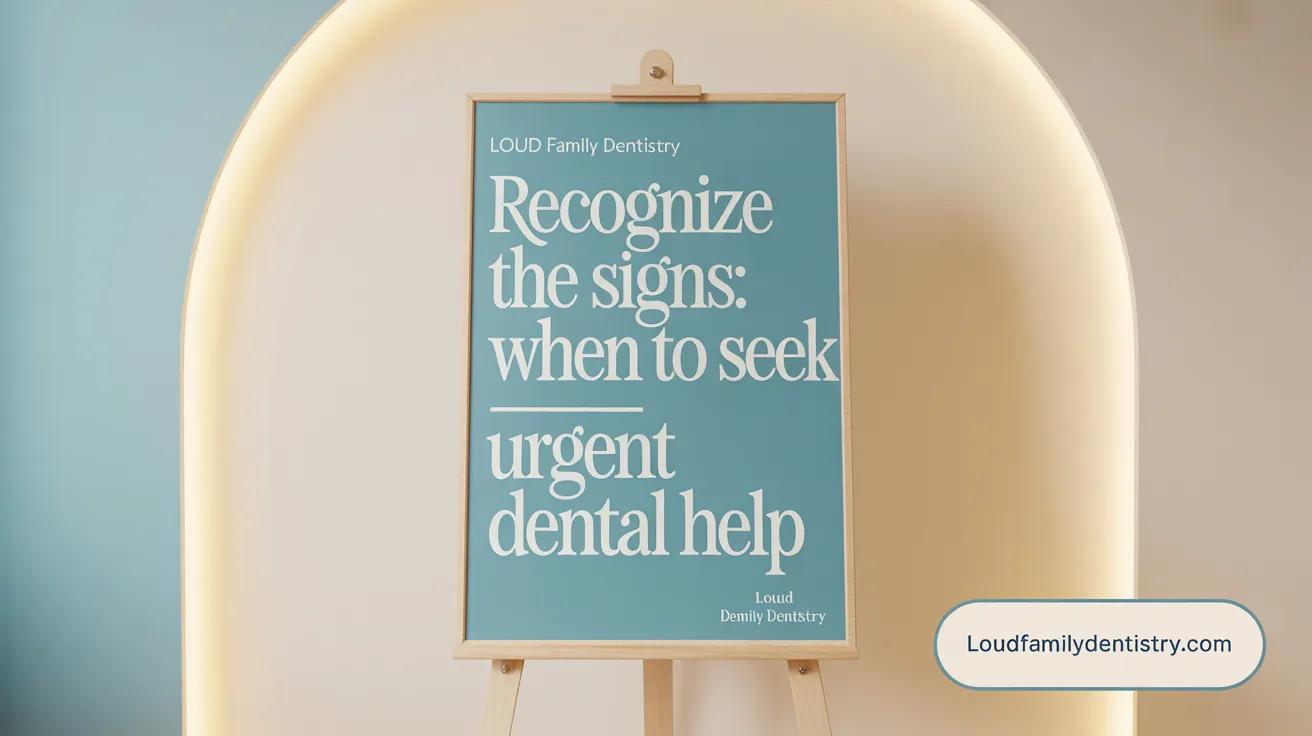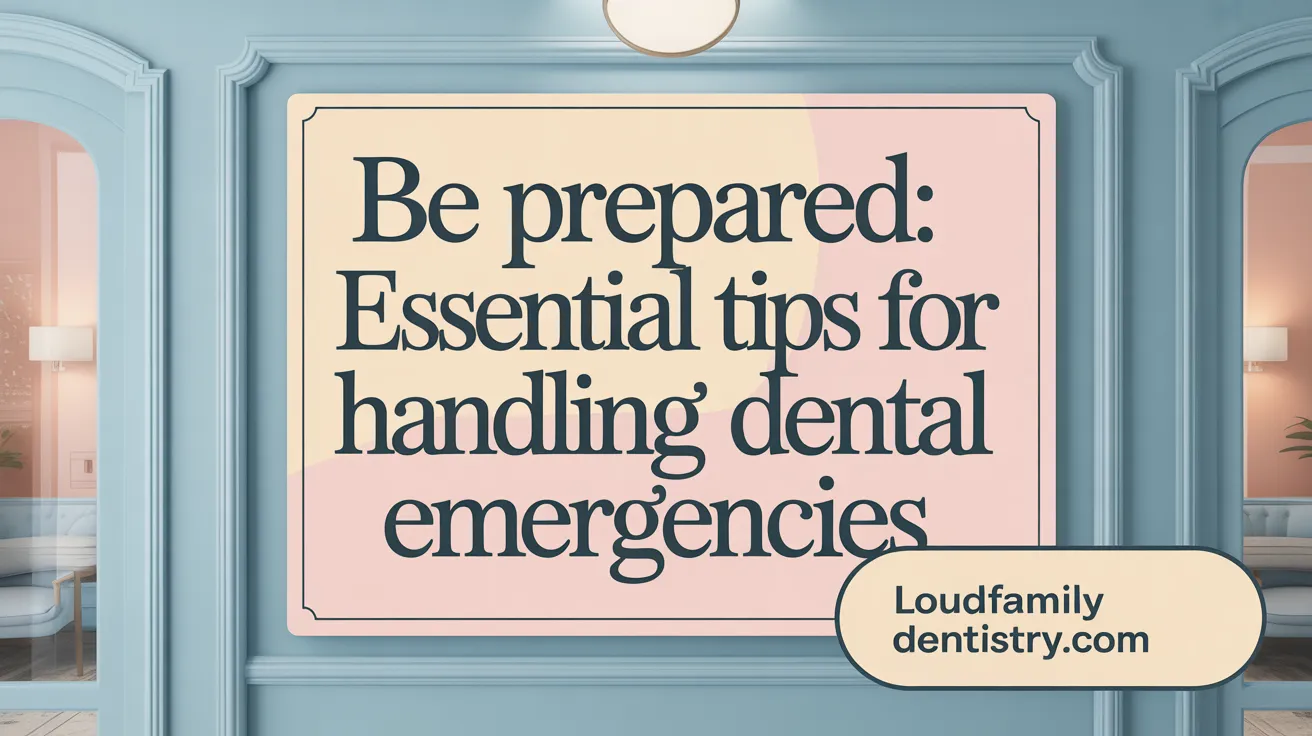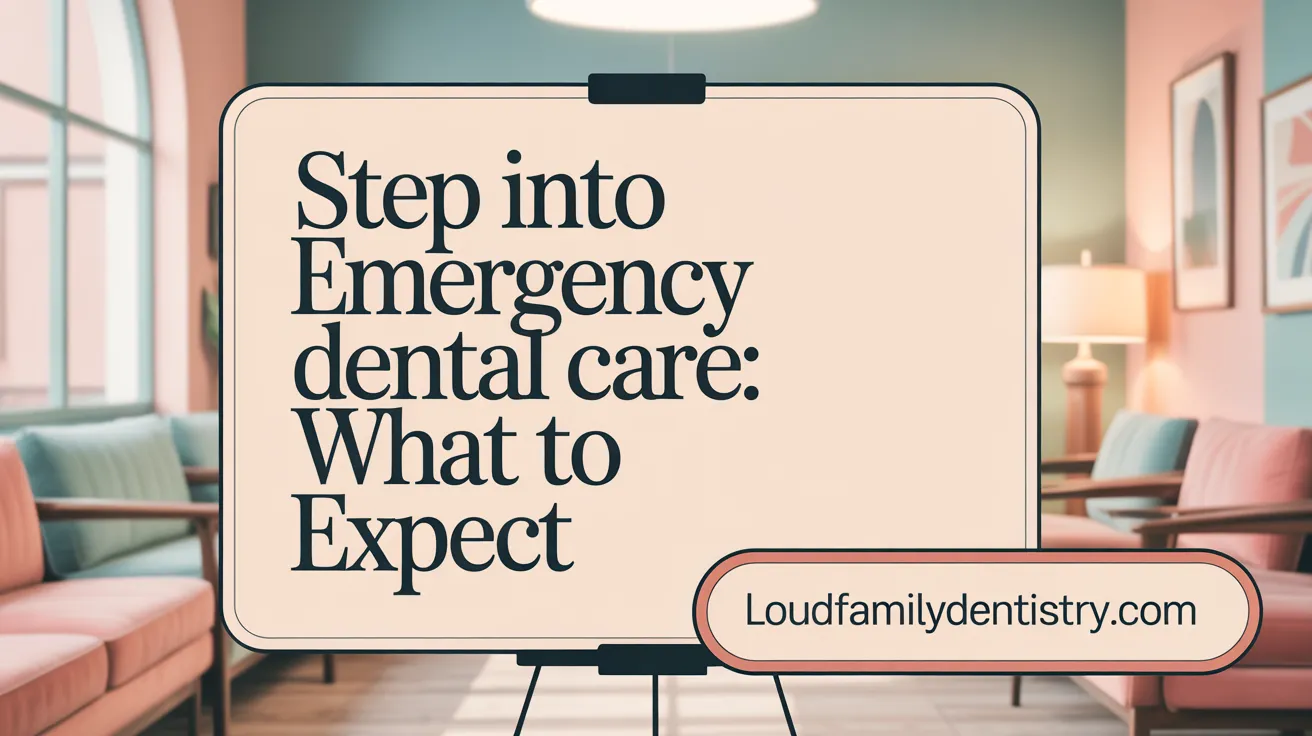Understanding Dental Emergencies and Their Urgency
Dental emergencies are urgent oral health issues that require prompt attention to alleviate pain, prevent infection, and save teeth. Recognizing when a dental problem escalates to an emergency can be crucial to reducing long-term damage and ensuring appropriate treatment. This article outlines what defines a dental emergency, how to recognize symptoms, and what to expect during an emergency dental appointment to help patients stay prepared and informed.
Identifying a Dental Emergency: Symptoms and Urgency

What is considered a dental emergency and how can I identify one?
A dental emergency refers to any urgent oral health issue that needs immediate medical attention to prevent severe pain, uncontrolled bleeding, infection, or permanent damage to teeth. Recognizing a dental emergency involves being aware of certain symptoms.
Common signs include intense, persistent toothache, broken, chipped, or completely knocked-out teeth, injuries to the soft tissues like gums, cheeks, tongue, or lips, ongoing bleeding, and noticeable facial swelling. These issues often follow trauma from falls, sports accidents, or other accidents. Serious infections such as abscesses or pulpitis also fall into this category.
Immediate actions recommended include rinsing the mouth gently, applying cold compresses to reduce swelling, controlling bleeding with gauze or a tea bag, and seeking prompt dental or emergency medical care. Timely response can help avoid complications and increase the chances of saving damaged teeth.
How can I recognize the symptoms that indicate an urgent dental emergency?
Signs of an urgent dental emergency include severe and ongoing pain, especially if it intensifies or doesn’t improve with over-the-counter remedies. Swelling in the gums, face, or jaw accompanied by fever or difficulty swallowing/breathing points to a serious infection needing prompt treatment.
Other urgent indicators include uncontrollable bleeding from soft tissues or a knocked-out or fractured tooth that can’t be reinserted easily. Traumatic injuries to facial bones and severe soft tissue bleeding also mark emergencies.
Notable early signs can be sudden changes in bite, trauma from impact or falls, or long-lasting and painful sores or mouth lesions. Recognizing these symptoms early and seeking immediate care are essential steps to prevent further damage and ensure optimal recovery.
Preparing for and Managing Your Dental Emergency Visit

What should I do before and during a dental emergency visit to ensure effective care?
Before heading to the dentist during an emergency, it’s essential to call your dental office first. Many dentists offer emergency services or after-hours care. When you call, be prepared to describe your symptoms clearly, including how you injured your mouth or teeth.
Control pain using over-the-counter medications such as ibuprofen or acetaminophen, and rinse your mouth gently with warm water to keep the area clean. If there's bleeding, apply gentle pressure with gauze or a clean cloth. For soft tissue injuries, using cold packs or ice wrapped in a cloth can reduce swelling.
If a tooth has been knocked out, carefully pick it up by the crown (top part), avoiding touching the root. Rinse it gently with saline or milk—not water—and attempt to reinsert it into the socket if possible. If reimplantation isn’t feasible immediately, store the tooth in a container of milk or saline and see a dentist within one hour.
During your appointment, your dentist will conduct a thorough examination, possibly including X-rays, to determine the exact problem. Be sure to provide a detailed account of how the injury occurred and your symptoms. Bring any pieces of broken teeth or dental appliances if available. Follow your dentist’s instructions carefully, including guidance on managing bleeding or pain, until definitive treatment is provided.
What are key tips for managing and preparing for a dental emergency visit?
Remaining calm is vital. Keeping a composed mindset helps you think clearly and act swiftly. Preparing a dental emergency kit with essentials like gauze, a small container for knocked-out teeth, and your dentist’s contact info can save valuable time.
Handling a knocked-out tooth properly is crucial—hold it by the crown, rinse gently, and store in milk or saline temporarily. For broken or chipped teeth, rinse with warm water, apply a cold compress to decrease swelling, and seek professional help promptly.
It’s wise to review emergency procedures regularly and perhaps practice mock scenarios to ensure you’re prepared. Consulting your dental provider or local dental association can give you additional safety tips and guidelines for different types of dental emergencies.
Being well-prepared and knowing the steps to take can significantly improve the outcome of your emergency visit, reducing pain, preventing further damage, and facilitating quicker recovery.
What Happens During a Dental Emergency Appointment?

Initial assessment and symptom review
When you arrive for a dental emergency, the dentist first reviews your symptoms and the circumstances leading to the injury. They ask detailed questions about the pain, bleeding, swelling, or any trauma experienced. This initial step helps determine the urgency of the situation and guides subsequent treatment.
Clinical examination and diagnostic imaging
Next, the dentist conducts a thorough physical examination of your mouth, looking for visible signs of damage such as chipped, broken, or knocked-out teeth, and soft tissue injuries. To get a clearer picture, they may take diagnostic images like X-rays or cone-beam CT scans. These images reveal hidden issues like fractures, infections, or root damage, which are crucial for accurate diagnosis.
Pain management and bleeding control
Managing pain is a priority during emergency care. The dentist may administer local anesthetics to numb the affected area, making procedures more comfortable. For bleeding, applying gauze pressure is often effective. If bleeding persists, the dentist may use materials like a tea bag or prescribe medications to help control it. Cold compresses are also used to reduce swelling and alleviate pain.
Treatment planning and intervention options
Based on the assessment and diagnostics, the dentist develops a tailored treatment plan. This may involve procedures like re-implanting a knocked-out tooth, removing broken fragments, treating infections with root canals or drainage, or preparing fractures for further stabilization. If necessary, sedation options can be offered to ease anxiety or facilitate complex procedures.
Post-treatment care and follow-up scheduling
Once immediate treatment is complete, the dentist provides clear instructions on home care, including pain management, oral hygiene, and signs of complications to watch for. Follow-up appointments are scheduled to monitor healing and conduct any additional treatments needed to restore oral health. Proper aftercare can prevent future issues and help ensure the best possible recovery.
Emergency Dental Treatments and Interventions
 In dental emergencies, immediate treatment is crucial to prevent further damage and alleviate pain. Common treatments can vary depending on the injury or condition but generally include pain management with over-the-counter medications, cold compresses, and rinsing with warm salt water.
In dental emergencies, immediate treatment is crucial to prevent further damage and alleviate pain. Common treatments can vary depending on the injury or condition but generally include pain management with over-the-counter medications, cold compresses, and rinsing with warm salt water.
Reimplantation of knocked-out teeth is a priority. If possible, the tooth should be handled by the crown and rinsed carefully. It can then be reinserted into its socket or stored in milk or saline solution if replantation at the scene is not feasible. The sooner the tooth is reinserted, ideally within 30 minutes to an hour, the higher the chances of saving it.
For broken, chipped, or lost restorations such as crowns or fillings, temporary measures can be used. Sugarless gum or dental cement can temporarily cover exposed areas and help preserve the tooth until professional dental care is obtained.
Infections like dental abscesses require prompt treatment involving drainage, cleaning, and possibly antibiotics. Antibiotics are also vital when there's a spread of infection or soft tissue involvement, helping to prevent serious complications.
Pain relief is often achieved with medications like analgesics, and antibiotics may be prescribed to combat bacterial infections. In cases involving trauma, procedures such as splinting of dislocated teeth or removal of severely damaged teeth are performed.
Post-emergency care involves instructions on managing discomfort, maintaining oral hygiene, and scheduling follow-up appointments for definitive treatment. These measures ensure optimal recovery and help prevent recurrent problems.
Understanding these interventions highlights the importance of quick and appropriate responses during dental emergencies, which can significantly influence the outcomes and preservation of dental health.
Patient Comfort and Emergency Dental Care Protocols

Are sedation options or comfort measures available during dental emergency treatments?
Yes, sedation options and comfort measures are readily available during emergency dental procedures to help manage pain and reduce patient anxiety. Common techniques include nitrous oxide (also known as laughing gas), oral sedatives such as diazepam, and intravenous (IV) sedation. The choice depends on the severity of the emergency, patient health, and individual preferences.
These methods create a relaxed environment, making it easier to perform necessary treatments quickly and effectively. They also help patients who experience significant dental anxiety, ensuring they remain calm throughout the emergency.
To guarantee safety, thorough medical assessments are performed before sedation, and vital signs are continuously monitored during the procedure. Overall, providing sedation and comfort measures enhances patient experience in urgent dental care, helping to alleviate immediate pain and facilitate optimal treatment outcomes.
Ensuring Peace of Mind in Dental Emergencies
Knowing what to expect during a dental emergency appointment can ease anxiety and help you act swiftly to protect your oral health. From recognizing urgent symptoms to understanding the treatment process and comfort measures in place, patients are better equipped to navigate these distressing situations. Prompt communication with your dental provider, careful preparation, and adherence to recommended protocols maximize the chances of successful treatment and recovery. With the right knowledge and support, dental emergencies can be managed effectively to minimize discomfort and long-term consequences.
References
- What Is a Dental Emergency and Where To Go for Care
- What to Do in a Dental Emergency
- What is a Dental Emergency and What Do I Do?
- 3 Things to Expect When Visiting an Emergency Dentist
- What Happens During Emergency Dental Appointments?
- Tips on What to Expect During an Emergency Dental Visit
- How Emergency Dentist Services Work
- The Top 5 Reasons You Might Need Emergency Dental Care
